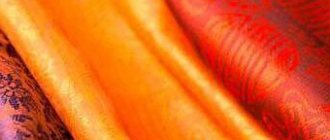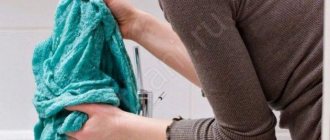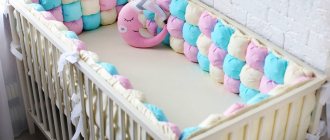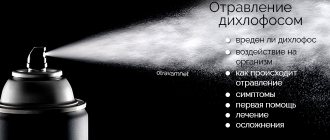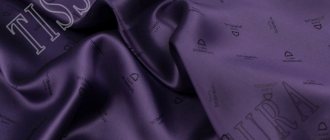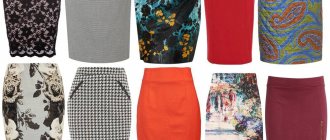Viscose is the first artificial fabric. The idea of obtaining threads from a chemical substance was first put forward by the English scientist Hookes in 1664. However, his experiments ended in failure. In 1844, J. Mercer was able to isolate wood from its alkaline solution.
A couple of decades later, the French chemist Guiller de Chardonnay patented a method for producing viscose. However, this material was very flammable and its production was soon abandoned. In 1891, Charles Frederick Cross and Edward John Bevin developed a cheaper technology for producing viscose fiber, and in 1902, a method for producing rayon.
The fabric received its name due to its source - a viscous viscous mass of dissolved cellulose. Later, the basic technology was changed and many modifications with different properties were obtained.
A bit of amazing history
Viscose means “viscous” in Latin. This name is associated with the special properties of the raw material for obtaining a thick, viscous mass from processed wood pulp.
Viscose was invented in 1884 by an engineer from France, Ile de Chardonnay, who was working on the possibility of producing an artificial fiber with the necessary properties. His discovery is based on a method for creating textiles from wood processing products. An amazing feature of the new fabric was discovered to change properties depending on the processing technology and become like silk, linen, cotton or wool.
However, English chemists received a patent for the right to manufacture in 1893. The viscose production enterprise started operating within a year, where the technology was successfully implemented. Viscose gained global popularity almost 100 years later with the massive launch of textile factories producing fabrics.
How is viscose-cotton blend made?
The main ingredient used in the production process is wood cellulose. Fortunately, with the use of the latest technologies, this takes much less time than several centuries ago, and the number of goods produced is growing every year. Despite this, the manufacturing principle remained virtually unchanged, with the exception of a few innovations.
The following stages of production are distinguished:
- processing wood into chips;
- boiling in an alkali solution;
- treatment with an acid mixture;
- adding cotton;
- giving a thread-like shape by passing it through a machine.
At the end of the production process, the viscose-cotton fabric is finished to its final form and then dried to prevent damage and, as a result, manufacturing defects due to excess moisture absorbed.
The difference between viscose and cotton and synthetics
Some believe that viscose is a synthetic fiber, others attribute it to cotton. None of the statements are true.
Artificial raw materials, like viscose, are produced by processing natural wood material. This natural cellulose is a natural fiber, but the threads themselves for future fabrics are obtained artificially.
Whereas natural materials are made from fibers that are already available; during the work of silkworm caterpillars, the growth of cotton, or flax and animal wool.
Synthetics are a product created by man using developed technologies. In short, threads are produced by synthetic processing of petroleum products.
The difference between the three types of fabrics lies in the raw materials and processing methods.
Viscose or polyester: which is better?
Viscose
Polyester
Sometimes viscose is compared to polyester, but these fabrics are completely different. The main difference is the composition of the fibers. Viscose is created on the basis of cellulose threads, and polyester is created on the basis of polyester.
Viscose is made from natural raw materials and is equal to natural fabrics. Unlike polyester, it is breathable and hygroscopic.
Polyester is more durable, does not wrinkle easily, dries quickly and does not require special care, but from its appearance it is immediately clear that the fabric is artificial. Despite the many advantages of polyester clothing, experts do not recommend wearing them all the time.
Production
The production of the canvas is preceded by a series of chemical processes to break down wood cellulose. The technology of modern viscose production is based on initial developments with significant modernization.
The process is divided into basic stages:
- Crushing wood material into small chips and boiling them in an alkaline solution to obtain a raw material base, which is a gray cellulose mass.
- Bleaching and pressing.
- Creation of threads by pressing the mass through the tiny holes of a spinneret into a container of acid.
- Processing and finishing of fibers.
- Drying.
Description of materials separately
Viscose and cotton are the most popular materials. Pure cotton is durable but wrinkles. Loses color brightness in direct sun.
Viscose is an artificial fabric. It is based on natural raw materials, namely wood. From it, through chemical processing, threads are obtained, and then fabric with high levels of breathability.
There is only one main drawback: the fabric loses its strength when wet. Moreover, the strength of cotton fabric does not depend on the level of moisture. Therefore, it has higher wear resistance.
Advantages and disadvantages
The characteristics of viscose consist of positive and negative aspects.
Positive traits:
- Comfortable and pleasant to wear.
- Paints well and retains color brightness for a long time.
- Permeates air and absorbs moisture.
- Has the property of thermoregulation.
- Does not cause allergies, skin irritations and does not accumulate static electricity.
- Drapes beautifully and is easy to sew.
- Eco-friendly, harmless to nature when disposed of.
Negative properties:
- Greater susceptibility to creasing during use.
- The fabric is not durable, it soon wears out and loses its original appearance under the influence of high temperatures and ultraviolet radiation.
- Difficulties in caring for viscose products due to deformation and shrinkage during washing.
Advantages and disadvantages
Viscose is permeable to air, lightweight, drapes well, and does not electrify. It can be: textured or smooth, light or dense, shiny or matte. In its pure form, it looks like translucent shiny silk. Products made from it are very light and comfortable to wear. It may look like wool, silk, linen or cotton, but is much cheaper. It is cool in summer and warm in winter.
In addition, viscose:
- pleasant to the body;
- does not shed;
- hypoallergenic;
- does not get dirty, so it is popular when sewing clothes for little ones;
- hygroscopicity is 2 times better than cotton;
- extremely durable when dry;
- does not require special disposal, since cellulose is a natural raw material that easily decomposes in nature.
viscose sundress
viscose blanket
viscose bed linen
viscose napkins
Viscose fiber is not without its disadvantages, among the main ones:
- creaseability may vary, check at the corner of the fabric before purchasing; for combined blended fabrics, creaseability is weaker;
- wet fabric becomes stiff, heavy, and can be damaged by any mechanical impact;
- if care rules are not followed, it becomes deformed and also shrinks when washed;
- stains remain from the water, so that they disappear, the product is soaked again;
- strong flowability of the fabric on cuts.
Under the influence of environmental factors: ultraviolet radiation, high temperature, and water, the material wears out quickly. This is especially true for fabrics made of fine fiber. Such products may fray at or near the seams. The addition of filters from sunlight, as well as antioxidants, increases the abrasion resistance of the fabric.
Fibrillization is a phenomenon in which numerous fibers appear on the canvas. From the resulting fluff, pellets are formed, worsening the appearance of the product. Thanks to technology, this drawback was eliminated. They proposed processing dyed fabric using special abrasives, as a result the surface became velvety, similar to suede.
Important: Material deficiencies are eliminated through subsequent processing, modifications, and special impregnations.
Mixed species
To reduce the impact of negative properties on the performance characteristics of the material, manufacturers introduce other fibers into the composition.
For example, polyester or nylon threads are added to viscose in different percentages. This provides greater strength, better wear resistance and less creasing of products. Such fabrics are called polyviscose.
Viscose fibers are also mixed with natural threads such as cotton, silk and wool. In some cases to reduce cost, in others to add softness and distinctive properties.
What and how are viscose fibers made from?
It is difficult to imagine how it is possible to make soft, comfortable fabric from wood. This process is multi-stage.
- First, the crushed cellulose is boiled in boilers along with calcium hydrosulfite salt.
- Water is removed from the resulting mass to a content of 6-8%. Then, to remove impurities, they are treated with moderate heating (45°C) with a solution of sodium hydroxide - alkali. This is how alkaline cellulose is obtained.
- The mass is kept for preliminary maturation, during which the molecular weight of the original wood cellulose decreases.
- At the next stage, the raw material viscose fiber is treated
with carbon disulfide. The result is a product with the complex name “xanthate”. After adding an alkali solution to the mixture and thoroughly mixing, a viscose solution with a water content of 86% is formed. - The solution is kept for several days for final maturation, during which the viscosity increases significantly.
- Fibers from the resulting mass are produced using the wet method, passing it through dies and directing it into precipitation baths with acid solutions.
- Long threads or short staple fibers are drawn from the resulting mass.
This method is traditional. There are more advanced technologies that have not yet been implemented everywhere.
Types of viscose fabrics
Processing technology determines the properties of the fiber, which is produced in three types:
- staple for clothes
- cord thread for obtaining high-quality fabric
- viscose silk for home textiles
The use of different raw materials and production methods allows you to obtain several types of fabric:
Staple
The fabric is made from short fibers of equal length. Due to its short length it gains elasticity. It wears well and wrinkles less. Available in printed, smooth and variegated patterns. The staple comes in different structures, crepe, twill, with or without stretch.
Modal
The fabric is made entirely of cellulose. It has the qualities of cotton fabric, and in a number of parameters it surpasses it, for example, in hygroscopicity. Durable material is not subject to wear. Modal is used for sewing everyday items and high-quality bed linen.
Tencel
Made from eucalyptus cellulose. Tencel is silky and soft on contact with the skin. It has strength and high moisture and breathability. Prone to deformation if care rules are not followed. Used for bedding and home textiles.
Acetate
The basis of artificial fabric is cellulose waste, and not full-fledged raw materials. The fabric is light, with a slight silky sheen. It differs from other viscose materials in that it wrinkles less and does not stretch. It has a significant drawback - it does not absorb moisture well. The material is subject to melting at high temperatures, fabric fibers quickly dissolve even when exposed to a drop of acetone. Due to its specific properties, acetate has a lining and auxiliary purpose.
Cupra
The material resembles silk in quality and appearance, and is therefore considered valuable. The process of making fabric is complex and expensive. Cupra is too picky to care for. Although it has high levels of strength, thermoregulation and air conductivity, which are important during operation. Used for elegant toilets.
Siblon
It began to be produced relatively recently, in the late 70s of the twentieth century. Coniferous trees are used as raw materials. Siblon has significantly improved performance characteristics compared to other viscose fabrics.
Lining
Hemmed on the wrong side of outerwear, jackets and hats. Protects the base material, absorbs moisture, breathes. The viscose lining glides well like twill.
Quilted
The fabric is subjected to additional processing, folded in two layers and finished with stitching. Designed for body shirts, jackets, leggings, quilts and home textiles.
Knitwear
Viscose fiber is used for the production of non-woven materials, for example, kulirka, jersey, pique, interlock, although their composition can also be cotton. Used as monofilament or in combination with additives. The fabric has stretch properties and is used for sewing T-shirts, children's clothes, sweaters, and underwear. The knitwear is very pleasant and fits the figure beautifully.
Application for sewing workwear
Workwear must be safe, hygienic and comfortable for workers, and protect from harmful influences. In its production, a mixture of viscose with other fibers is often used. To provide additional characteristics, as well as to facilitate maintenance and extend service life, the resulting fabrics are impregnated with special compounds.
One of the best blended fabrics for workwear is considered to be one that contains 47% viscose and 53% cotton, as well as a mixture of 65% polyester and 35% viscose . The products fit perfectly, have the necessary hygienic properties and elasticity. Used for sewing uniforms for medical, banking, and office workers.
Flight attendants, conductors, salespeople, and hotel staff work in workwear made from viscose materials. This clothing is ideal for indoor work . Due to good fit, clothes look elegant, and employees have a pleasant appearance.
Many workers are recommended to wear viscose underwear under their uniform. It has an antistatic effect, so the uniform fits the worker perfectly. When fabrics are treated with special compounds, workwear acquires additional characteristics, such as increased strength, resistance to dirt and wrinkles , as well as water-repellent and breathable properties.
In addition to sewing workwear, viscose materials are used quite widely. Where else can you find products using these fibers?
Determining viscose in fabric composition
It is not difficult to recognize whether viscose is present in a fabric. You should start by studying the appearance. The material has bright colors and a matte or glossy surface. The canvas is strong, upon contact it is smooth and slightly cool.
An experiment using a burning match will help you verify your conclusions. As you know, the fabric contains treated wood. Therefore, when set on fire, viscose will burn with a characteristic thick flame, where the smell of scorched paper can be clearly heard. The charred fiber quickly curls into lumps. When touched they crumble. Cotton fabrics are also tested for naturalness in a similar way.
Customer Reviews
The lightness of summer products made from viscose fabric and their ability to allow air to pass through, like linen and cotton clothing, are noted.
The downside is that it creases, although not more than with natural fabrics.
Regarding use in the interior (bedspreads, curtains), the great similarity with silk and attractive appearance are emphasized.
In general, buyers agree that viscose fiber is a worthy alternative to more expensive natural fabrics.
Applications - what to sew
Viscose has many useful properties, which significantly expands its scope of application.
- Clothing for various purposes, including for children (blouses, dresses, jackets, skirts, blouses, suits).
- Men's shirts and T-shirts.
- Pajamas and nightgowns.
- Sportswear and underwear.
- Production of textile products and bed linen (tablecloths, bedspreads, curtains).
- Release of cleaning equipment.
- In the shoe industry.
- For decorative elements and finishing, such as embroidery.
Other products
This natural synthetics is used in different areas of our lives:
- sewing casual and sportswear for women, men and children, both summer and winter assortment (T-shirts, turtlenecks, dresses, blouses, skirts, sweaters and fleece pants);
- household (napkins and rags for cleaning, washing windows and dishes, for caring for furniture and household appliances. These napkins are very popular because they can be used without the use of special cleaning products);
- home textiles (curtains, tablecloths, towels, bedspreads, bed linen, carpets);
- sewing outerwear (as lining fabric);
- needlework (embroidery threads).
In order for any item to serve for a long time, it requires high-quality care . How to properly care for clothes made from natural synthetics?
Recommendations for care
When washing things made of viscose, you must follow the recommendations, since the material is difficult to care for, like all things made from natural fabrics. All washing, drying and ironing operations must be carried out with care.
- Hand washing is preferable for viscose. Machine wash only on delicate cycle and preferably in a laundry bag. Spin needs to be turned off. Detergents should be soft and it is better to use liquid ones.
- Wrinkling or rubbing the fabric is not recommended. Replace wringing by gently squeezing out excess water and then letting it drain naturally.
- Drying flat on a towel or dryer will help prevent deformation and stretching.
- It is recommended to iron with a low-heat iron in the “silk” position and without steaming. Iron items should be slightly damp or through a damp iron. Spraying water and steam causes stains on fabric.
When caring, you should take into account the composition and manufacturer's recommendations on the product label.
Use and care
Viscose is quite whimsical, so it needs careful and thorough care. If you don’t want to be left with a faded, stretched rag instead of a beautiful thing, then you should follow all the rules of washing and ironing.
It should be remembered that viscose does not tolerate machine washing, spinning and ironing with a very hot iron with a steam function. Steam and splashes cause stains.
Therefore, hand washing is recommended. If, however, washing is carried out in a machine, then the mode should only be delicate, with the addition of appropriate detergents.
It is advisable to first check the information on the label, because such material usually consists of a combination of different types of fibers, and this may change the care conditions. It is better to iron in the “silk” mode through a damp cloth.
Application and recommendations for selection
Viscose is widely in demand as a substitute for natural cotton. The use of viscose fibers makes it possible to reduce the cost of the material without compromising hygienic properties. Such fabrics retain their usual names: staple, rep, twill. They are used for sewing dresses, shirts, light jackets and raincoats, underwear, and children's clothing.
Viscose silk is very popular . It looks like natural silk, is pleasant to the touch, and has a noble shine. But heavier and stiffer than real silk, it slips and crumbles when cut.
It wrinkles heavily, shrinks, is not resistant to stains, and may leave stains from water and other substances. The following types of viscose fabrics are widely known: crepe, taffeta, poplin. They sew elegant dresses, suits, blouses, and use them in decoration.
Soft viscose is ideal for the production of knitwear; children's clothing that meets the necessary hygienic requirements is especially in demand. Viscose is often combined with natural and synthetic fibers.
Blended fabrics can be plain-dyed, printed, or variegated. Used for sewing a wide range of products, including outerwear. In particular, jacquard fabrics are used to make interior textiles: curtains, bedspreads, tablecloths.
